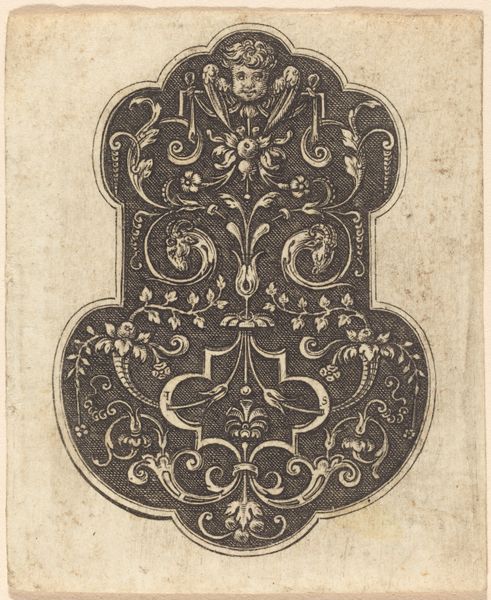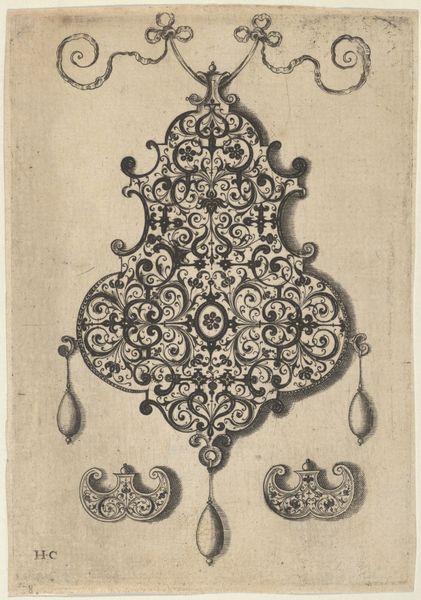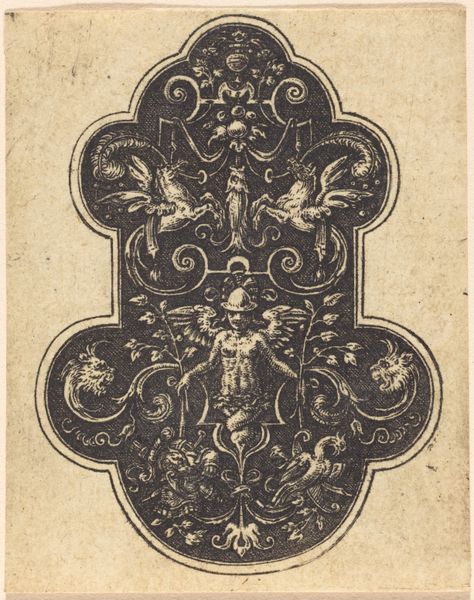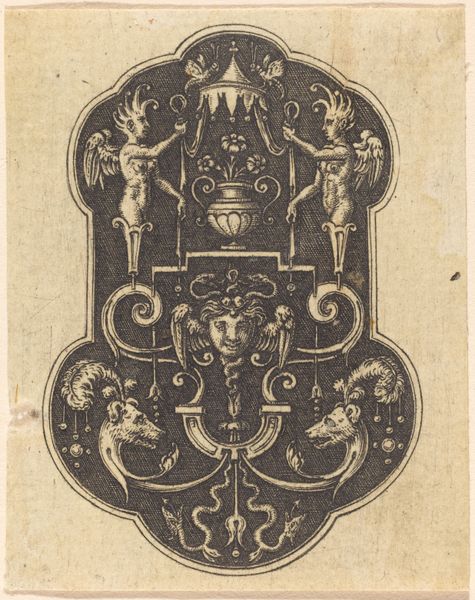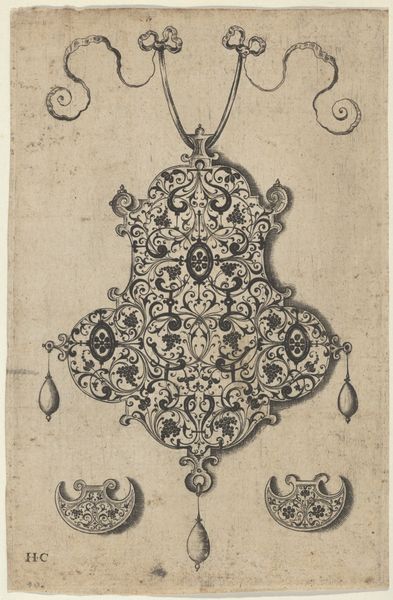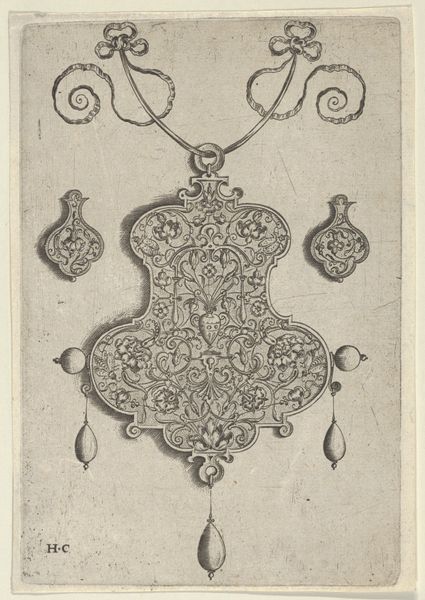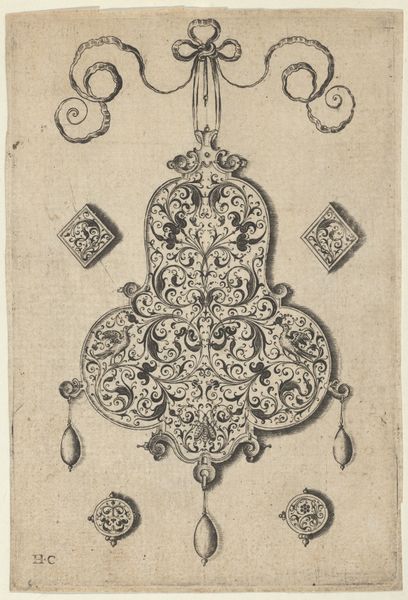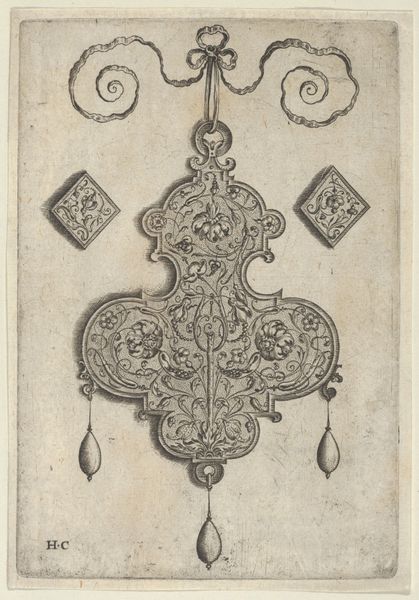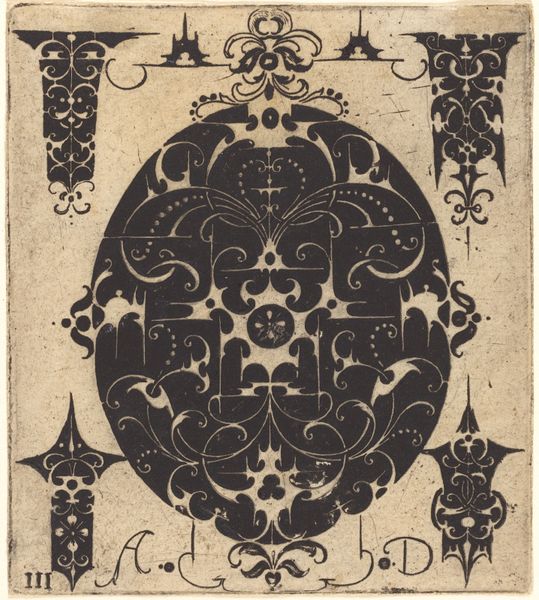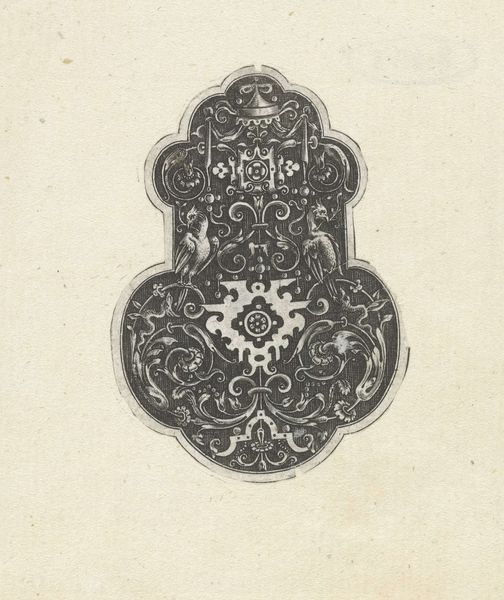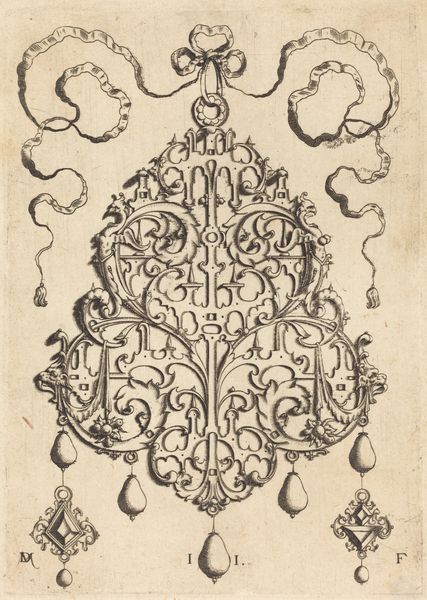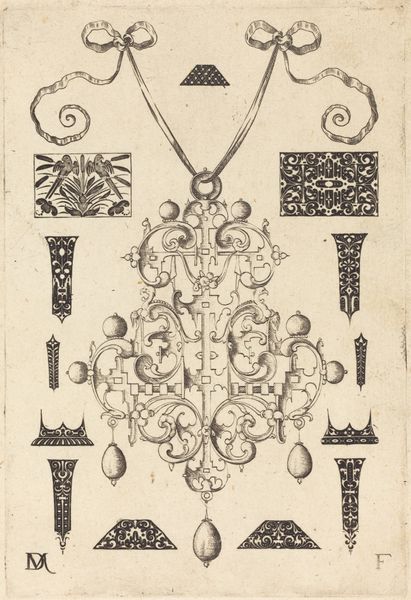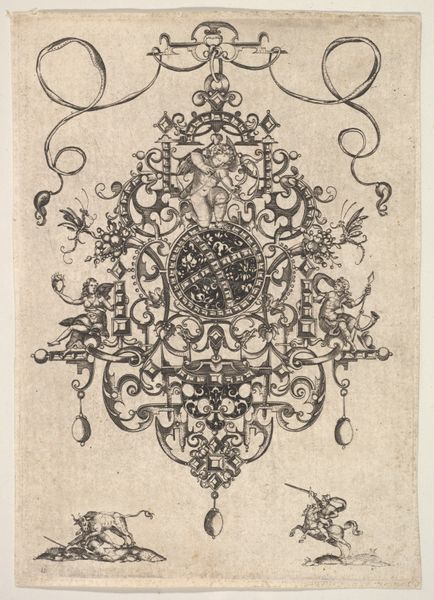
drawing, print, ink, engraving
#
drawing
#
pen drawing
# print
#
old engraving style
#
mannerism
#
11_renaissance
#
ink
#
geometric
#
line
#
decorative-art
#
engraving
Copyright: National Gallery of Art: CC0 1.0
Editor: This delicate print, “Arabesque Designs,” is an engraving in ink by Etienne Delaune. It feels like an echo of courtly life, with the formal symmetry, but it also reminds me of something ancient, maybe even Byzantine. How do you interpret this work? Curator: It’s tempting to see echoes of courtly life, isn't it? But let's think about "decorative art" beyond just surface aesthetics. How does this proliferation of ornamental prints in the Renaissance play into the period's burgeoning market and class structures? Mannerism itself challenged the assumed authority of High Renaissance classicism, hinting at tensions beneath the surface. Consider the role these patterns played in asserting status. Who had access to them? Editor: I never really considered that before. The ability to possess and display these prints, even if they were “just” decorative, was a form of power. So, the geometric designs, the line work… were these just copied, or re-interpreted in different contexts? Curator: Exactly. Think of this print not just as a static image but as a fluid, adaptable template. What possibilities are opened up if we view it as source material for embroidery, metalwork, or even architectural details, each infused with unique cultural and social meanings in specific locations? In asking questions of value, power, and dissemination we avoid celebrating ornamentation blindly. Editor: So, looking at this intricate design isn't just about appreciating its beauty; it's about understanding its circulation and adaptation within power dynamics. Thank you for broadening my understanding beyond pure aesthetics. Curator: Precisely! Now, how would *you* use this design to make a statement about ornamentation?
Comments
No comments
Be the first to comment and join the conversation on the ultimate creative platform.
